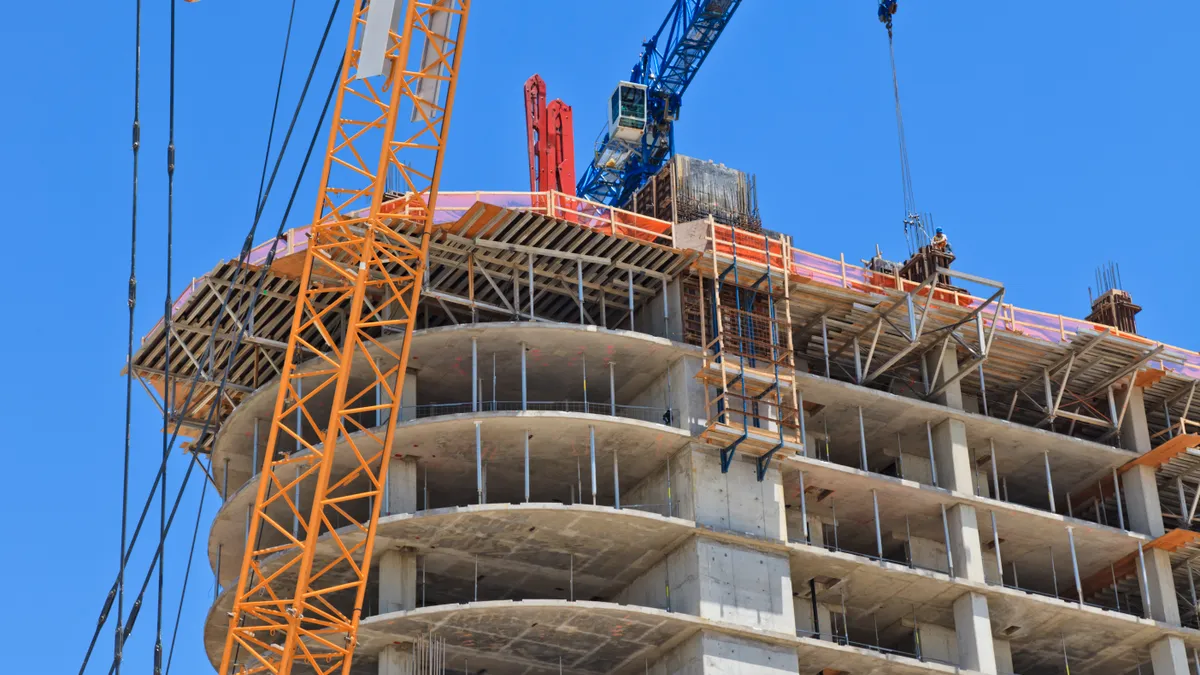Texas' major lien laws makeover, which went into effect this year, extended the ability to make claims against a project to subcontractors and design professionals in the Lone Star State.
The new laws now allow subcontractors to file liens, and expanded the list of workers who can put a "cloud on the title" of a property, complicating any future sale or ultimately forcing a sale of the property, to cover payment for their services.
"This particular expansion really affects architects, engineers, surveyors, landscapers and demolition contractors the most," said David Vanderhider, a member at Dykema, a Detroit-based law firm that hosted a webinar Tuesday on the new Texas lien laws. "Before this new law, for example, architects did have lien rights but only if they contract it directly with owners. Now as a result of the new law, those five that I mentioned, starting with architects, now have lien rights even though you’re not interacting directly with the owner."
Here are the major changes:
- Persons entitled to lien are expanded to include a licensed architect, engineer or surveyor providing services to prepare a design, drawing, plan, plat, survey or specification.
- A subcontractor now includes one who furnishes labor or materials to the original contractor or to a subcontractor. Under the previous law, there were different tiers for subcontractors. Now, all subs are considered subcontractors for notice purposes.
- Updates to the definition of retainage. Under the old rules, the term statutory retainage was previously used to describe the 10% that the owner had to withhold from payments from the original contract throughout the project. Now, the "retainage" refers to amounts withheld pursuant to a contract. In other words, retainage amounts can be contractually determined. The reserve fund, on the other hand, is not contractually determined.
- There are two statutory notice changes for claimants other than an original contractor. The first is notice to protect a claim for unpaid labor and the other is to protect the claim for unpaid contractual retainage.
- Second month notice has been eliminated for the statutory notice for unpaid labor and material. Now, only the third month notice is required, which must be sent the 15th day following the third month after the labor was provided.
- Lien waivers are no longer required to be notarized.
- Notices can now be served via FedEx, UPS or other forms of traceable, private delivery or mailing service that can confirm proof of receipt.
- The statute of limitations to file suit to foreclose on a lien has also been reduced from two years to one year, with the option to extend it for an additional year.
What this means in practice: Consider a situation where an owner hires an architect of record. That architect then hires a civil engineer, structural and geotechnical engineer. Under previous law, those individuals did not have lien rights. Now, they do.
So, owners now need to make sure that lower tier design professionals are paid or else they face a lien, said Vanderhider.
"Owners may want to consider requiring their architect to include payment paid language in their contracts or require lien releases of their consultants when they send payment," said Vanderhider. "Likewise, for those design professionals who didn’t have lien rights before and now do, they definitely want to be up to speed on what it takes to protect their lien rights."
The statute also now includes a template of what both the unpaid labor and materials and contractual retainage notice forms should look like, and advises to include invoices or billing statements with the notice to help support the claim.
"These form notices are important because the old statue did have requirements needed to perfect a lien, but there were no forms," said Vanderhider. "So, if you didn’t use magic language, then you risk your lien. So, having a form definitely eliminates some of this."
These rule changes only apply to an original contract entered into on or after January 1, 2022. For original contracts entered prior to the New Year, the previous version of the law applies.
"For contractors out there and subcontractors, when you're entering into your agreements, make sure you know who owns the property, make sure you know who you’re doing work for and who the end user is going to be," said Isaac Villarreal, member at Dykema. "It can get really complicated. Don’t just sign a contract to get into anything and then call us later saying ‘Hey we need to figure out whether or not we’ve got a lien.'"














